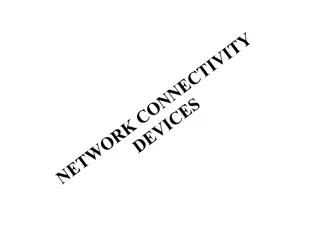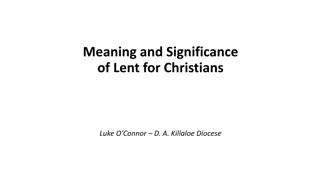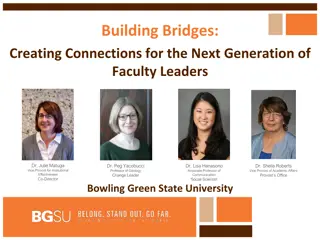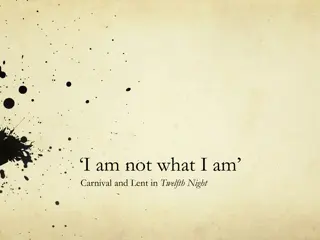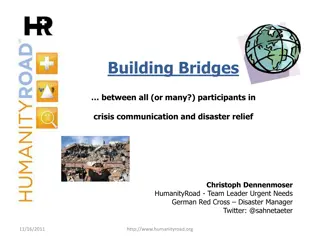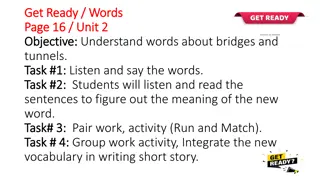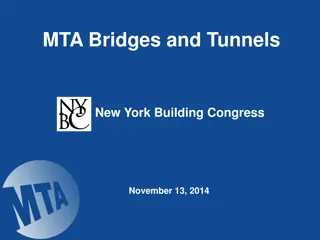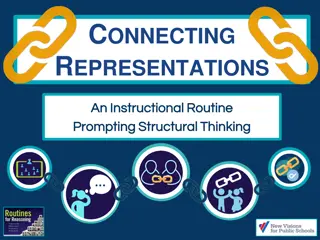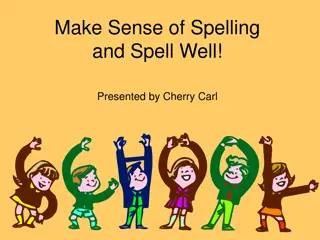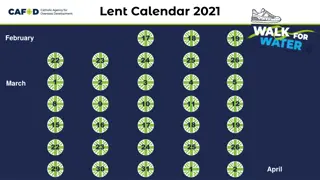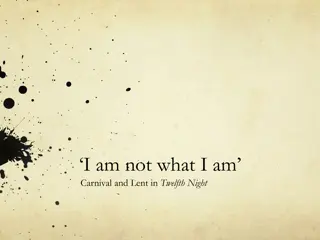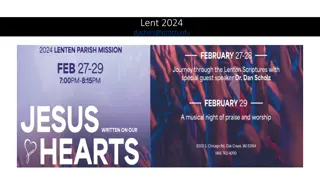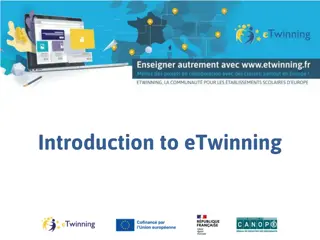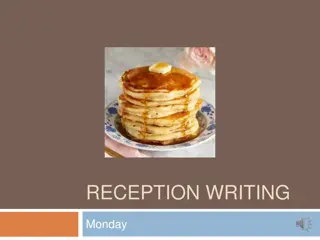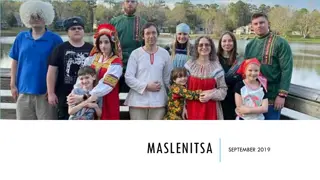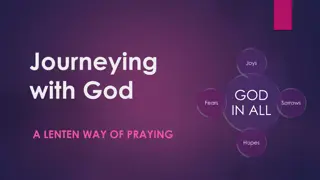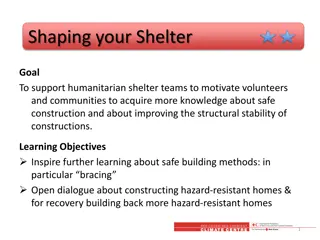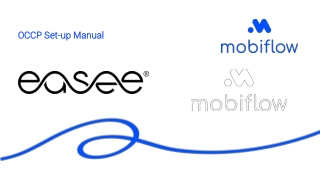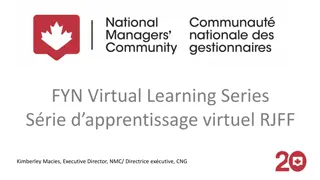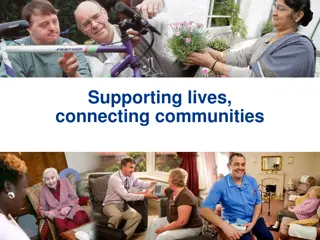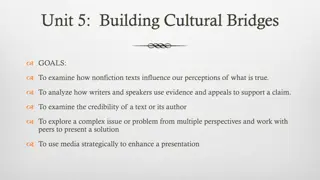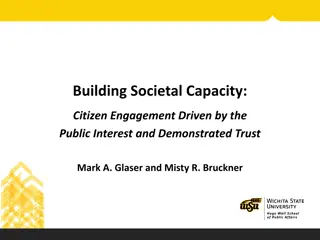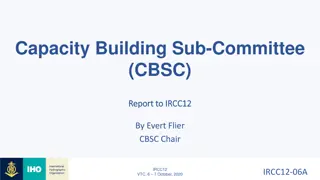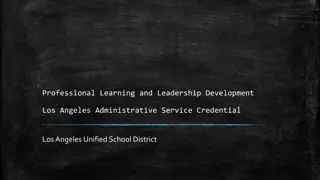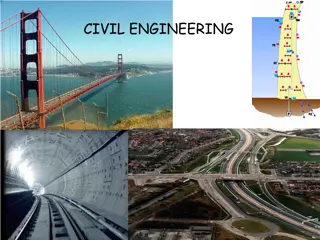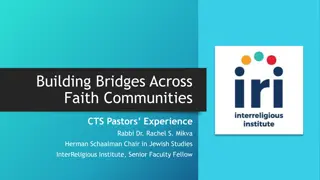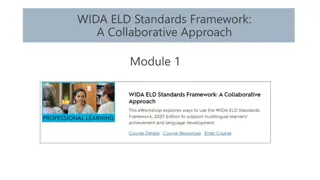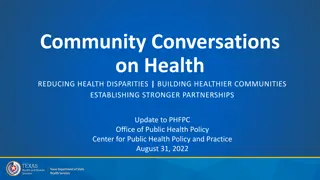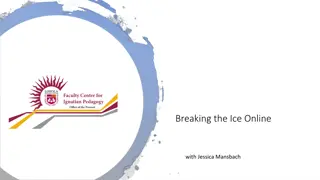Building Bridges: Connecting Through Lent Activities
Explore ways to connect, inspired by Pope Francis's call to build bridges, not walls, during Lent 2023. Engage in activities for secondary schools focusing on forming meaningful connections, understanding emotions, and supporting vulnerable children and families through the Catholic Children's Society.
Uploaded on Sep 13, 2024 | 0 Views
Download Presentation

Please find below an Image/Link to download the presentation.
The content on the website is provided AS IS for your information and personal use only. It may not be sold, licensed, or shared on other websites without obtaining consent from the author. Download presentation by click this link. If you encounter any issues during the download, it is possible that the publisher has removed the file from their server.
E N D
Presentation Transcript
LENT 2023 LENT 2023 Ways to Connect Ways to Connect Connection Activities for Secondary Schools
This years Lent Appeal is This year s Lent Appeal is inspired by Pope Francis s call: inspired by Pope Francis s call: Build bridges, not walls Build bridges, not walls . . . talk to one another, . . . talk to one another, listen to each other, listen to each other, walk together walk together
Building Bridges Building Bridges 1. 1. Build bridges, not walls. What do you think Pope Francis means? Build bridges, not walls. What do you think Pope Francis means? 2. 2. How can we Build bridges, not walls ? How can we Build bridges, not walls ? 3. 3. Who can we Build bridges with Who can we Build bridges with?
Our Connections Our Connections Pope Francis asks us to build bridges Pope Francis asks us to build bridges and form meaningful connections with and form meaningful connections with others. others. Forming positive, healthy and Forming positive, healthy and meaningful connections with other meaningful connections with other people is very important for our people is very important for our mental health and emotional mental health and emotional wellbeing. wellbeing.
Our Connections Our Connections This Lent, we will also be thinking about This Lent, we will also be thinking about how we can connect with children and how we can connect with children and families who need our help. families who need our help. Our school will be raising money for the Our school will be raising money for the Catholic Children s Society ( Catholic Children s Society (CCS). CCS is a local charity that helps vulnerable children local charity that helps vulnerable children and families. and families. CCS). CCS is a During Lent we will learn more about the During Lent we will learn more about the work of CCS and the children they help. work of CCS and the children they help.
LENT 2023 LENT 2023 Ways to Connect Ways to Connect Connection Activities for Secondary Schools
1. Connecting with ourselves Materials Needed: Paper, pens, colouring pencils/felt tips The more we feel our feelings, the easier it is to understand them. Studies have shown that naming feelings helps to calm the amygdala (the brains 'alarm bell') which allows us to feel calmer and more in control. For example: " I feel stressed because I have an exam tomorrow". Next time you feel stressed or overwhelmed try quietly checking in with yourself and ask "How do I feel right now and why?" Activity: Take 5 mins to draw or write how you feel right now. You can choose to share your feelings with the class or a friend or keep them private. It's up to you!
Tuesday: Connecting with others Materials Needed: Wheel of support template, pens, felt tips/ colouring pencils. Co-regulation is when we feel supported and soothed by another person. We all need help with our feelings and it's important that we have people we trust to share them with regularly. When we share our feelings with someone we trust and they respond, we feel heard and validated. Interestingly, the more co regulation we receive, the easier it is to self regulate (calm ourselves and manage our feelings). That's why it's so important to ask for help when you need it. Activity: Use the wheel of support to write down all the people that can support you with co-regulation and all the strategies and activities you can use to self regulate. We have given some examples here.
Example wheel of support: Do something you enjoy Take some time to draw or write how you feel Speak to a friend Make sure you get enough sleep, food and water Speak to a counsellor at Kooth: https://www.kooth.com/ Check in with yourself and name how you feel Let a parent/carer or adult at school know how you are feeling Spend time outside and get some exercise
Wednesday: Connecting through teamwork Materials needed: Spaghetti and marshmallows or clean, dry recycling and sellotape/masking tape Our brains are wired for connection, helping us create meaningful bonds and learn from each other. When we work together, we can build brain structures for either trust and collaboration or conflict and competition. In order to promote positive connections to each other we must communicate, listen and respect others' opinions. Activity: Take 10 mins to build a bridge in teams of 3-4 people. The biggest bridge wins!
No person is an island, we all need to feel connected to others to maintain our mental health. Community comes in many shapes and sizes. Schools, neighbours, friends, clubs and family all form different types of community. Socialising and connecting with others helps stimulate our brains and improve memory and attention. This mental activity keeps our minds healthy. Activity: What can you do to help others in the community? Choose 3 things that you will do throughout this week to help and connect with others.
Friday: Connecting through laughter Laughter helps to boost our immune systems, lower stress levels and draws people together. It is thought to have evolved as a tool for social bonding and as a way to express playful intention towards others. When we laugh our frontal lobe (the higher part of our brain) filters the information and decides what is funny, this triggers an emotional response in the limbic system (middle brain) which in turn triggers a physical response. Activity: 5 to 10 min. Go around the class and do a "fake" laugh, anyone who laughs for real is out!


